The Unitarian Universalist Service Committee advances human rights through grassroots collaborations.
Encroaching Erosion a Looming Threat to Chevak Native Village
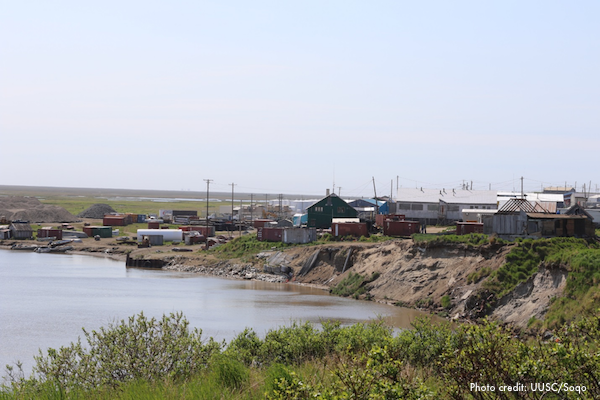
By Salote Soqo on August 7, 2017
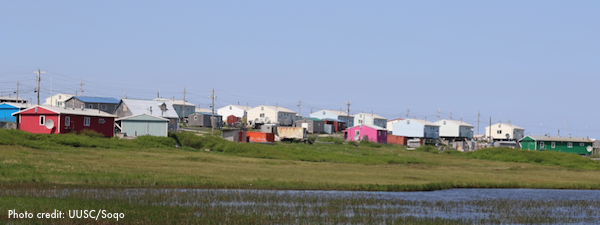
Communities who have contributed the least to the planet’s climate crisis are threatened by accelerating climate change impacts. Chevak Native Village is one of the many frontline villages in Alaska which needs urgent protection. Minimal government assistance has left villagers to cope with weather related changes and erosion caused by increasing temperatures and thawing permafrost by themselves. But like other villages in Alaska, this community does not have sufficient capacity nor resources to deal with the barrage of ongoing climate issues, and is in need of immediate assistance.
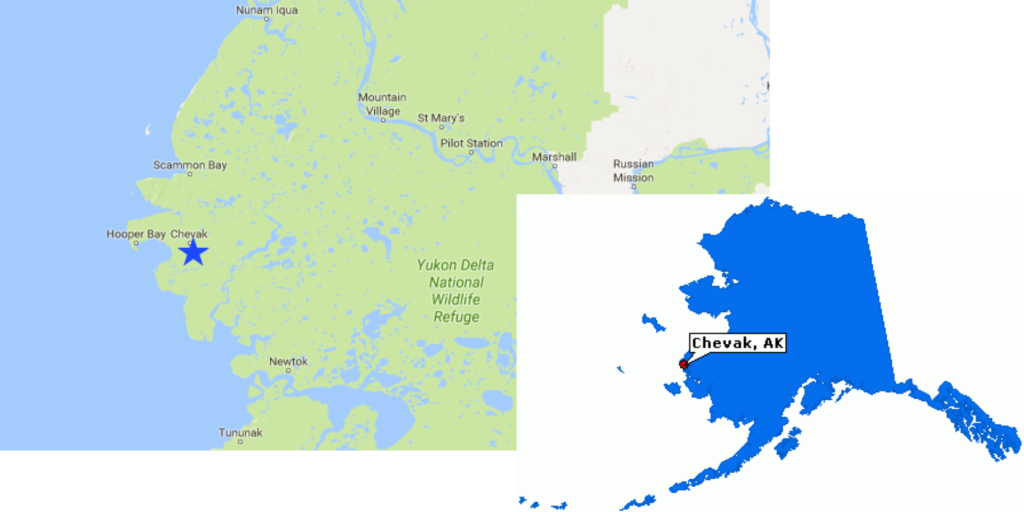
Chevak village is about 518 miles northwest of Anchorage and about eight miles inland from the Bering Sea. The village is home to 1,200 Cup’ik villagers, including 200 children who attend the local Chevak School. The village has over 200 stilt homes painted with bright colors that mask the wooden structures arranged neatly across the village.
In early June, UUSC joined our partner, the Alaska Institute for Justice (AIJ), on a visit to Chevak, one of the 16 villages that AIJ is working with to develop advocacy strategies to enhance their ability to adapt to a radically changing environment. Our shared vision is to ensure that the human rights of Alaska Native villages are advanced and protected in the face of climate risks.
The primary goal of the visit was to assist the State of Alaska’s Division of Geological & Geophysical Surveys (DGGS) Coastal Hazards Program to install shoreline erosion monitoring equipment. Project Manager Jacquelyn Overbeck describes this work as part of the State’s effort to facilitate community-based monitoring of erosion in areas where minimal or no baseline erosion data exists in rural Alaska. The installation included a community teach-in to discuss the basis of the monitoring and to show villagers how to collect and read data. Chevak is one of the first villages where this work is taking place.

Land erosion is taking place along the bluffs that form the southwestern borders of the village causing land instability for homes and other community structures. Over the years, individual homeowners have placed sandbags and metals to stop the erosion, but this has not been enough. According to some villagers, erosion has been happening since the 1980s but is now happening at a more rapid pace. Without immediate assistance, Chevak could erode away and cause the community to relocate.
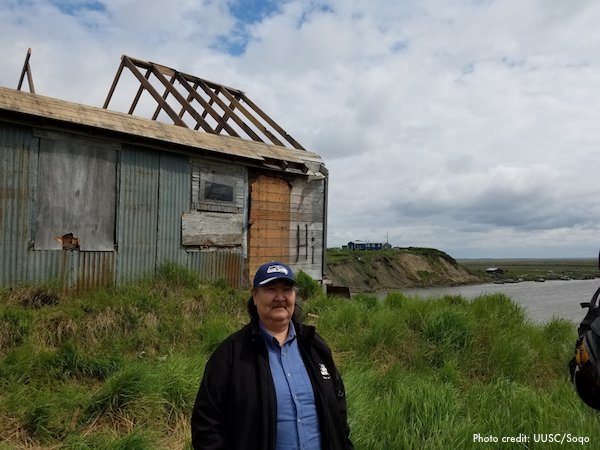
But relocation is not an option, nor is it new for Chevak. Chevak Mayor Richard Tuluk states that “This is our third home.” Chevak first moved a few miles inland from their original location along the Bering Sea sometime in the 1930s, where they lived for about ten years. In 1950, they moved to their current location, which is located behind the bluff of the Ninglikfak River. The land that Chevak currently sits on belongs to Hooper Bay. This history pays homage to the nomadic culture of Alaska Natives as natural voyagers.
AIJ’s work with Chevak focuses on implementing community-based monitoring, which is coordinated with state and federal government agencies that can provide information regarding rates of erosion and resources to respond and protect the community. Robin Bronen, the Executive Director of AIJ, states that “Part of what needs to happen, is that communities need to be given the information they need to predict when storms or natural hazards are going to happen, and at the same time monitor the impacts of these disasters in real time and report that back to national and state agencies so that they are aware of what communities are experiencing. With this data, communities will also be able to access financial resources that will help them reduce their hazards and risks.”
Erosion is not the only issue that Chevak is dealing with. Some villagers shared stories of how they were once able to travel across permafrost-laden marshland to access the surrounding volcanic mountains during winter to pick berries, but due to permafrost melting earlier and faster than before, those trips are now becoming impossible to make. Other villagers spoke of finding fewer fish stocks, increasing flood waters during storms and frequent warm weather periods.
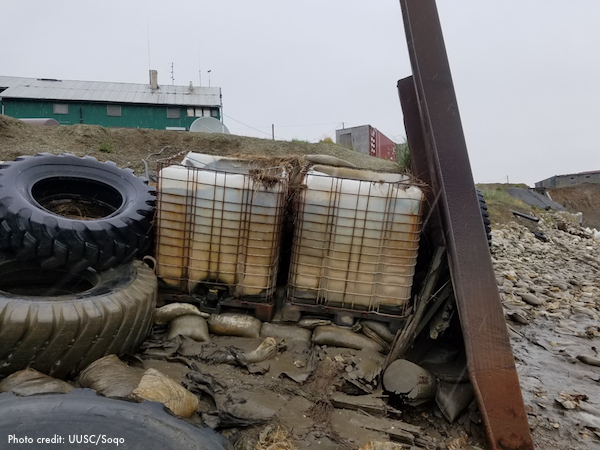
Without a governance framework in place to address this multitude of problems, government assistance will be provided on an ad-hoc basis at best, and communities will continue to lack the resources they need. Alaska Native villages will not be the only communities in the nation or the world who must adapt to this accelerating climate crisis. The Internal Displacement Monitoring Center (IDMC) reports that in 2016, about 24 million people were displaced by sudden onset hazards in over 118 countries. This figure does not include those that are displaced by slow onset climate impacts, which are difficult to determine. This data is staggering and reflects the enormity of climate induced forced displacement and the importance of a governance framework.
Responding government agencies must partner with communities at risk to determine effective adaptation strategies that ensure the protection of life and property. This also ensures that the processes that take place are transformational, and that they recognize and respect the agency and human dignities of those who are unjustly confronted by our climate crisis.
Read This Next
UUSC Recommendations for the Global Compact on Migration
UUSC staff offer remarks at the Second Informal Thematic Session for Global Compact on Migration at the United Nations Headquarters in New York on May 23, 2017. Read More →
Celebrating International Migrants Day with a Call to Our Philanthropic Allies
This International Migrants Day, celebrate with UUSC as we issue a new resource, Community-Led, Human-Rights Based Solutions to Climate-Forced Displacement: A Guide for Funders. Read More →